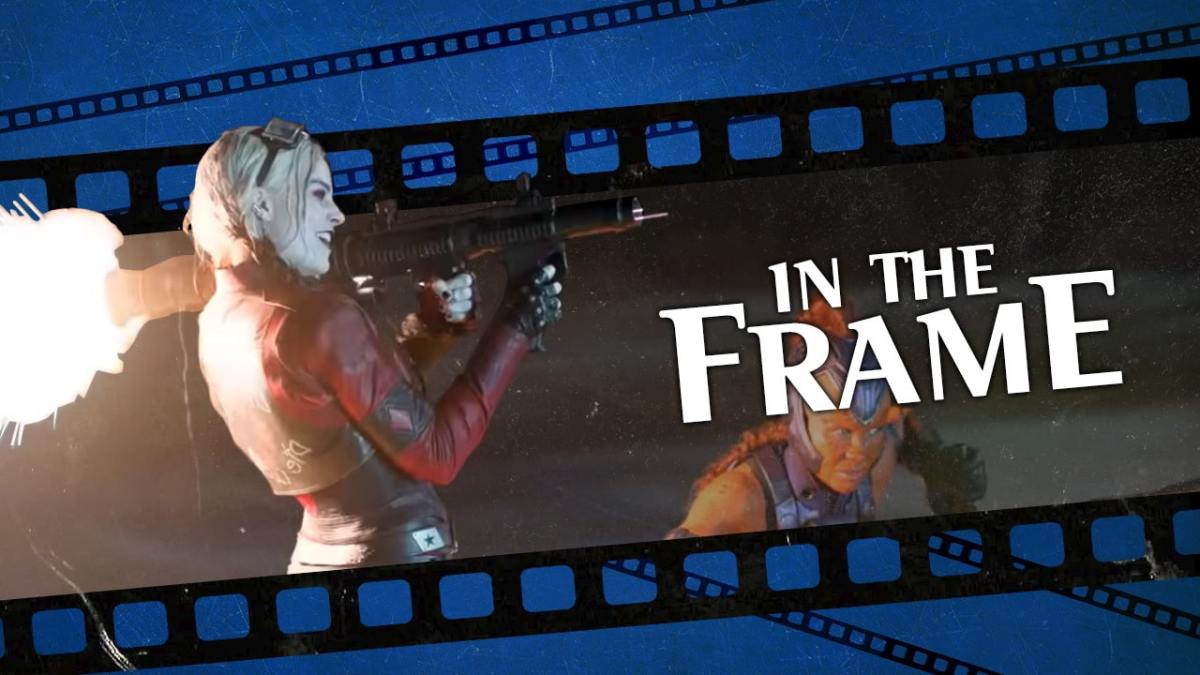As one might expect, the weekend brought a glut of superhero news from DC FanDome: a new trailer for Wonder Woman 1984, a teaser for The Batman, a trailer from the infamous Snyder Cut of Justice League. However, the most interesting and tantalizing bit of news concerned James Gunn’s The Suicide Squad.
Gunn’s The Suicide Squad has actually wrapped production, just slipping in under the wire before the coronavirus pandemic completely shut down Hollywood productions. However, Gunn did not come to DC FanDome with a complete trailer, most likely because there was still rendering to be done on the film’s computer-generated characters. Instead, he arrived with a set of videos. One was an introduction to the cast of characters, and the other was a behind-the-scenes look at production.
Despite a long and varied career, Gunn is probably best known for directing the Guardians of the Galaxy films. These are notable as the relatively rare Marvel Studios films with a strong authorial fingerprint. However, following an orchestrated right-wing social media campaign, Gunn was fired from the third Guardians of the Galaxy film. He was then hired to direct The Suicide Squad for Warner Bros. (He has since been rehired to direct the third Guardians of the Galaxy film.)
As such, The Suicide Squad is an oddity in terms of its relationship between the two largest comic book movie companies, with Gunn straddling both sides of the aisle. This is common enough in comic books, where writers and artists have often hopped between companies to raise their profile and advance their careers. However, it is still relatively rare in terms of comic book movies, perhaps because movie development is so long and companies like to maintain working relationships.

Interestingly, Warner Bros. and Fox overlapped in pronounced ways. Richard Donner famously directed Superman and (eventually) Superman II and went on to produce the X-Men franchise. Bryan Singer hopped from X-Men and X2 over to direct Superman Returns. In the past couple of years, Warner Bros. has perhaps smartly courted directors who felt creatively pigeonholed by Marvel Studios. Patty Jenkins departed Thor: The Dark World before helming Wonder Woman. Ava DuVernay turned down the chance to direct Black Panther before signing on to New Gods.
However, the strange dissonance of Gunn sandwiching The Suicide Squad between the second and third films in the Guardians of the Galaxy trilogy seems oddly fitting. As a property, the Suicide Squad has always worked best as a collection of misfit toys very much at odds with the larger continuity around them. Even more than the X-Men or the Doom Patrol, the Suicide Squad are outcasts who often seem to have washed up on the shoals of the shared universe.
Of course, the modern incarnation of the Suicide Squad has moved quite far from its original premise. In 2016, David Ayer’s Suicide Squad earned terrible reviews but an impressive box office. The movie released in theaters was reportedly edited by the team that put together its catchy trailers, and Ayer has recently been trying to leverage Zack Snyder’s success to get them to release “The Ayer Cut.”
Ayer’s film leaned into the darkness implicit in the name “Suicide Squad.” It was grim and gritty and highly militaristic. It was arguably of a piece with Ayer’s other recent films like Fury and End of Watch. It featured characters like El Diablo (Jay Hernandez), a pyrokinetic who burnt his entire family alive, and Killer Croc (Adewale Akinnuoye-Agbaje), who Akinnuoye-Agbaje summarized as “a cannibal with rage issues.”

This approach to Suicide Squad made sense based upon the most superficial reading of the core concept. After all, Suicide Squad was notable as one of the rare mainstream superhero comic books that had sold itself on the high level of mortality of its rotating cast, a few years before death became so cheap a commodity within the genre. If all anybody knew about Suicide Squad was that it was “the one where characters died,” of course the adaptation would be grim and gritty.
However, this overlooks what actually made John Ostrander and Kim Yale’s run on Suicide Squad so influential and so beloved. The fact that characters regularly died in Suicide Squad was not the thing that made the concept interesting, but rather a symptom of it. The series was so compelling because it was populated by the sorts of flotsam and jetsam of a comic book shared universe that Ostrander and Yale could kill off with impunity.
Suicide Squad was launched in the wake of Legends, the first event following Crisis on Infinite Earths. Crisis on Infinite Earths had been the massive line-wide reboot of the DC universe. This reset of continuity would create all manner of snafus for characters like Hawkman. Ostrander would later argue that the aftermath of the event “suffered from the fact that there was no clear concept of who the characters would be at the end and what the DCU would look like.”
However, it would also present a host of opportunities for enterprising writers like Ostrander and Yale. In 2019, Ostrander recalled the general mood as, “Hi, we’re DC, now we’re open to anything.” A variety of characters had been orphaned by the continuity reset and so didn’t fit with editorial plans to reboot or relaunch the major players. As comic book author Grady Hendrix has explained, “DC had been inventing all of these really stupid C-list supervillains for Batman and everyone to fight.” They were now Ostrander and Yale’s to play with.

Ostrander had always been a major continuity geek, to the point that even the name “Suicide Squad,” and “Task Force X,” was itself drawn from a late 1950s adventure comic. Suicide Squad had a selection of characters with no shared attribute beyond the fact that they didn’t fit in anywhere else in continuity. “If I wanted to kill one of them off, I didn’t have to clear that with anyone,” he recalled. “I figured some characters would not be missed, but I could certainly use them in the Squad.”
Some of these uses were profound and rehabilitative. It would be Ostrander and Yale who would reinvent Barbara Gordon after she was paralyzed in The Killing Joke, creating an iteration of the character popular to this day. “The Bat office weren’t going to do anything else with her and so we asked if we could use her,” stated Ostrander. However, a lot of it was fun. At one point, Ostrander and Yale drafted fellow DC Comics writer Grant Morrison onto the Squad and killed him off. Morrison had written himself into comics continuity in his own Animal Man and so was fair game.
What little Gunn has shown of The Suicide Squad suggests a project in a similar vein. It exists in a state of suspended continuity. The presence of returning cast like Viola Davis, Joel Kinnaman, and Margot Robbie suggests that it is a sequel to Suicide Squad. However, the film does not opt for a number or a subtitle. It is not Suicide Squad 2 or Suicide Squad: Mission to Moscow. It opts for the definite article. It is The Suicide Squad. The one and only – but also somehow the second.
Idris Elba joined the cast to replace Will Smith. However, the script was changed so that Elba would not be playing Deadshot, but another masked assassin called Bloodsport. Still, there seems to be little effort to disguise Bloodsport as an expy for Deadshot. The casting of Storm Reid as Bloodsport’s daughter Tyla suggests that the character’s central relationship will be functionally equivalent. Bloodsport is not Deadshot – but also somehow the same as Deadshot.

The hall of mirrors runs deeper. The announcement video includes some delightful deep cuts, even if it’s disappointing that bald Scotsman Peter Capaldi will not be playing bald Scotsman Grant Morrison in his Suicide Squad debut. The most interesting announcement is that John Cena will be playing the Peacemaker. Cena himself describes the character as “a douchey Captain America,” but Peacemaker is most interesting for who he almost was, rather than anything he ever actually did.
The Peacemaker was created by writer Joe Gill and artist Pat Boyette for Charlton Comics. Many of Charlton’s characters were purchased by DC in 1983. Some of those characters – like Blue Beetle, Captain Atom, and the Question – managed to work their way up to B-list status over the years. However, they were most notable for the fact that Alan Moore and Dave Gibbons briefly considered using them in the story that would become Watchmen.
Moore and Gibbons would eventually just create original characters who mapped more or less to the Charlton heroes. Captain Atom became Doctor Manhattan. The Question became Rorschach. Thunderbolt became Ozymandias. The Peacemaker became the Comedian, the character whose death would set the bulk of the story in motion. As such, the Peacemaker is an especially tiny footnote in DC continuity. His most notable use in recent years was in Grant Morrison and Frank Quitely’s Pax Americana, which used him as a stand-in for Comedian in a story exploring Watchmen.
There is something gleefully, surreally weird about all of this. The Suicide Squad is directed by James Gunn between two films for the company’s primary competitor. It will be both a sequel and a fresh start. It has cast Idris Elba to replace Will Smith, but in a different role that will serve the same purpose. It stars John Cena as a superhero who was created by a rival company, and he is now best known as the inspiration for a character in an out-of-continuity book.
All of this is cheeky, playful, and a little weird. James Gunn has openly cited John Ostrander and Kim Yale’s work on Suicide Squad as an inspiration in his approach to the material. It’s too early to say for sure, but The Suicide Squad has the makings of a fitting tribute.






Published: Aug 24, 2020 11:00 am